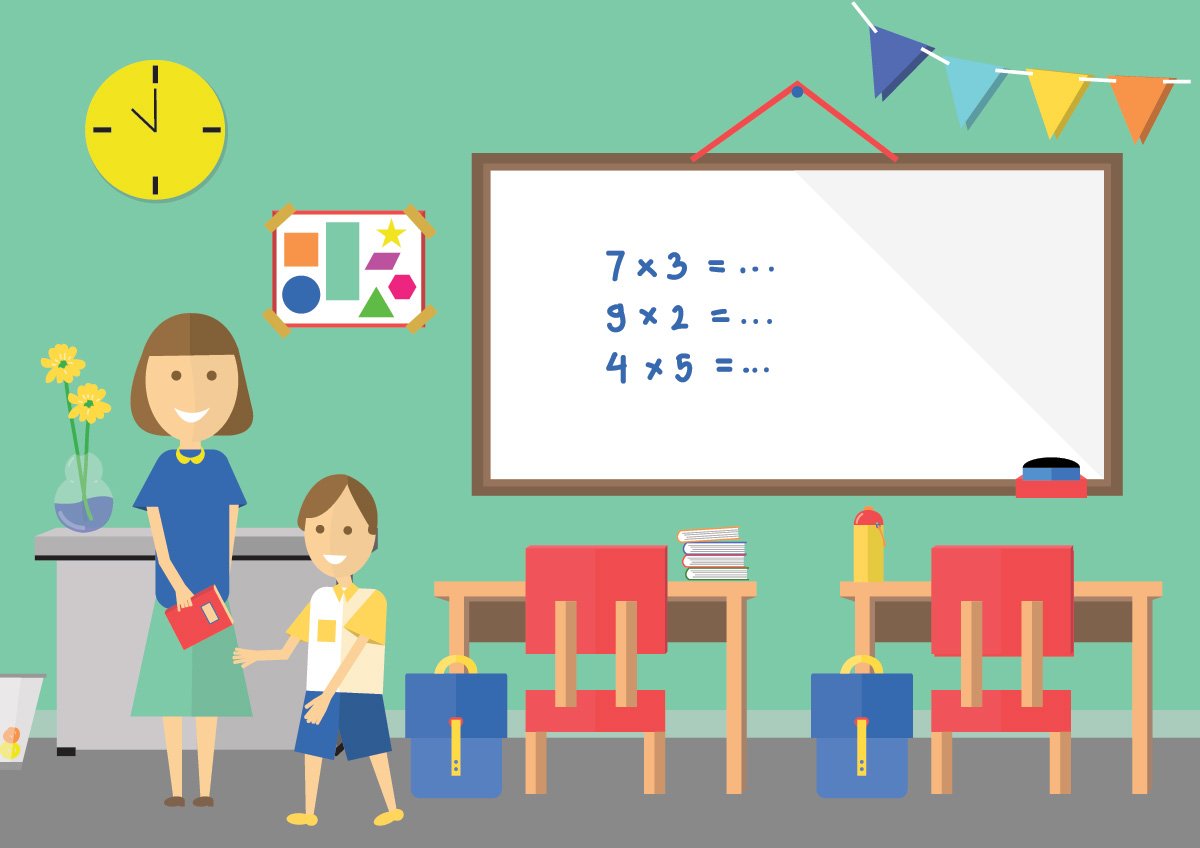
Ok, so your students have returned…now what?
The first few weeks of school can be a flurry of activity and movement, but every day of student interaction and teacher-led instruction counts! Below, we’ll share some of our best tips for getting the most out of those first few weeks of school.
Fostering a positive classroom environment is imperative during the first few weeks of school. This environment includes both the physical classroom, as well as the rapport between teacher and students. Heather Wolpert-Gawron, at Edutopia, has several great tips for back to school night and setting the classroom environment for the school year. Posting student work in the classroom is part of setting the stage for a positive learning environment and helping parents “…picture their own kids learning in the room,” as Wolpert-Gawron puts it. Here are our tips for posting student work in the classroom.

- Include only positive comments on posted work.
- The goal here is encouraging a positive learning environment. Don’t give other students fodder to make fun of the students that may be struggling in certain areas.
- Ask students if they mind if you post their work.
- As students gain confidence in their work throughout the school year there will be very few students not OK with posting their work.
- Inform students when an assignment will be posted in the classroom.
- This goes hand-in-hand with the point above. If the students know that you plan to post an assignment, this allows them to do their best, and make something they will be proud of. Angela Watson, an educational consultant and blogger, puts it this way: “If your students are sharing their work with the world, they want it to be good. If they’re just sharing it with you, they want it to be good enough.”
- Change posted work regularly.
- Don’t let your classroom walls get stale and boring!
Developing and sustaining good habits is so important the first few weeks of school. If you saw something in your classroom last year that you want to avoid, now is the time to ensure it doesn’t follow you this year. Learn from your experience in the classroom, and develop and implement good habits for learning.
- Consistency is key to developing habits.
- Routines and consistent expectations will help to develop good work and school habits, for both you and the students.
- Your homework policy should be consistent and offer enough routine that students begin to know how to budget their time.
- There will be some weeks where homework tasks can take longer. As you get further into the school year, keep in mind that the rigor of the work assigned will extend the amount of time students spend on it. If you were previously assigning 20 single-digit multiplication problems, and now you’re requiring 20 triple-digit multiplication problems…you may need to reassess the amount of homework you’re assigning. Maybe you need to adjust the amount of problems to 10, so students can get through their homework in approximately the same amount of time.
- Develop catch phrases, slogans, and/or jingles to remind students of things that are important to remember:
- “No name, no fame” for those students who can’t remember to write their name on their work.
- Or, for a spelling strategy: “I read it; I say it; I write it; I remember it!”
Encourage students to take ownership of their own learning. There are some very concrete ways you can encourage this in your classroom:
- Make your expectations clear to the students.
- If students don’t fully understand what your expectations are for their work and behavior, you can’t expect the students to meet them.
- Let your students know how they will be assessed and graded.
- Information is key here. Students appreciate clear guidelines and instructions on how to correctly complete the work. Rubrics are an excellent way for your students to understand what is expected of them.
- Have students score their own work and write an explanation for the score they should receive.
- Instruct them to provide text evidence for the score. Again, rubrics are a great way for students to grade their own work. The rubrics should offer concrete examples of work at each possible score level.
- Provide opportunities for students to monitor their own progress.
- Charts with stickers, scores, or other marks to show growth are great examples of this.
Finally, sharing the standards that students are expected to meet is helpful for both students and parents. Confusion about the standards and expectations can be frustrating and detrimental to student learning. You can help foster a positive learning environment for the students at home by encouraging parents to learn more about what is expected of their student, how they can help their student achieve, and letting them know that if they have questions, you’re always available to help. The National PTA has also released several Guides to Student Success that are incredible resources for parents, be sure to check them out here!
Do you have any tips for the first few weeks of school that we haven’t covered? Leave them below in the comments!

